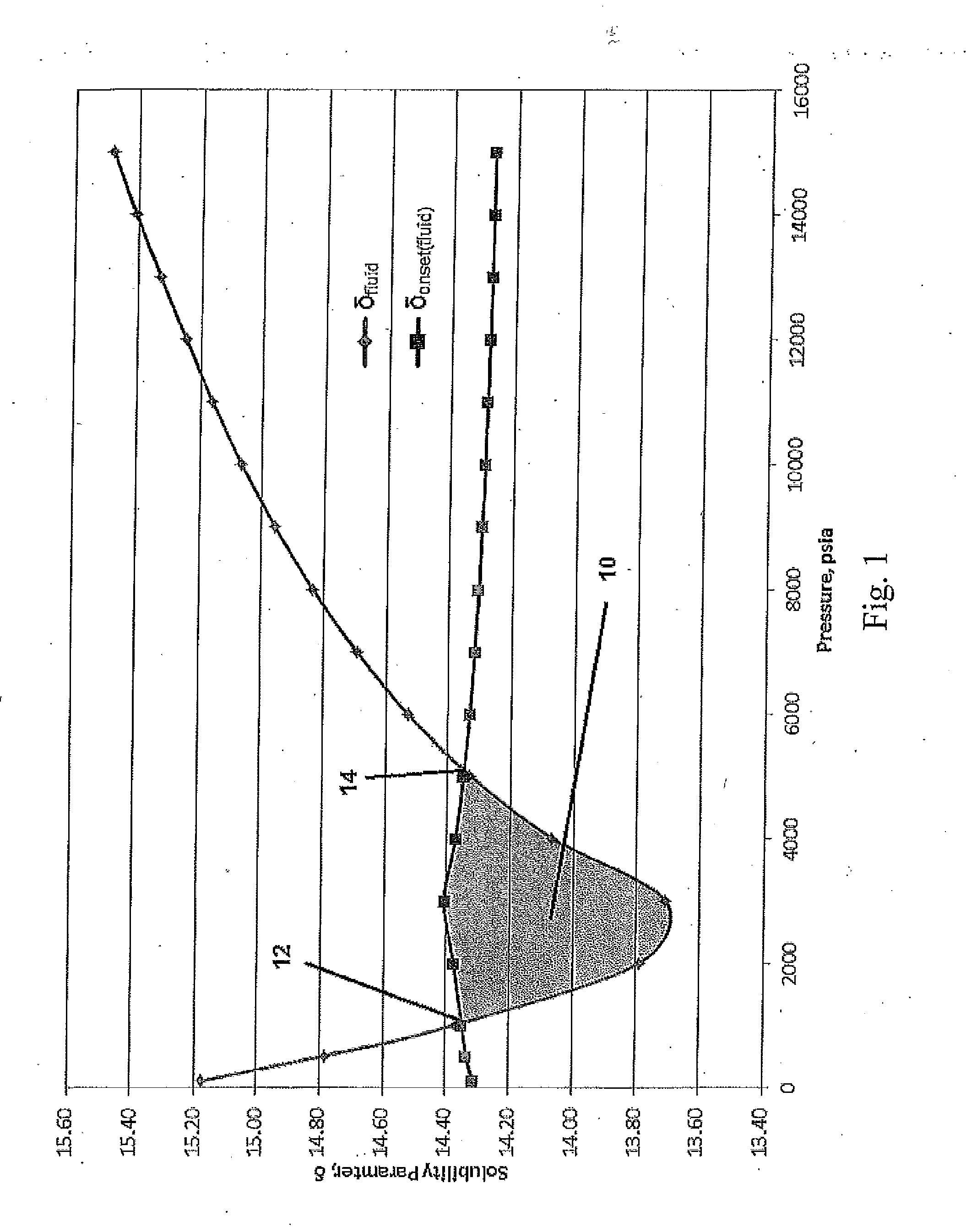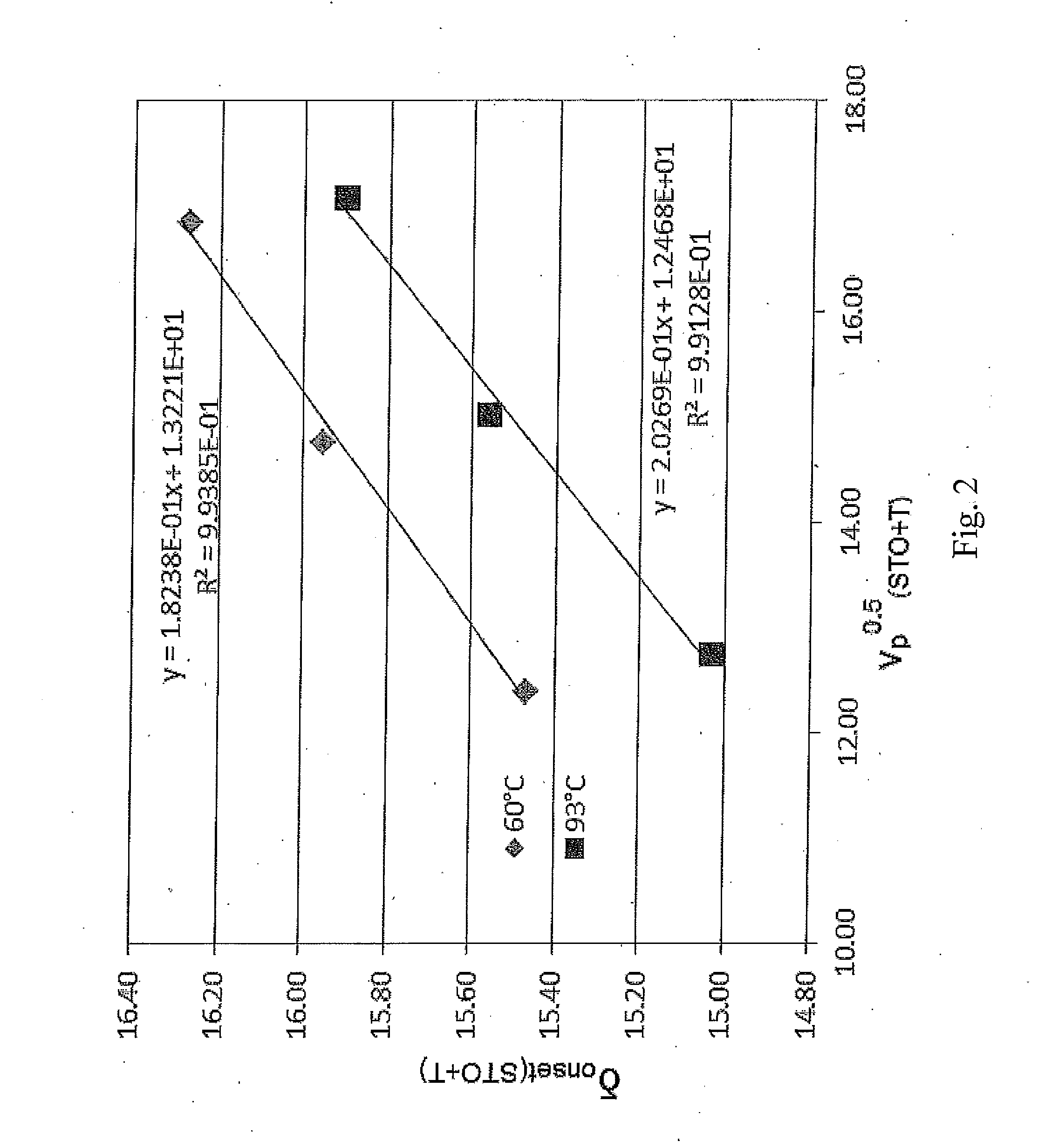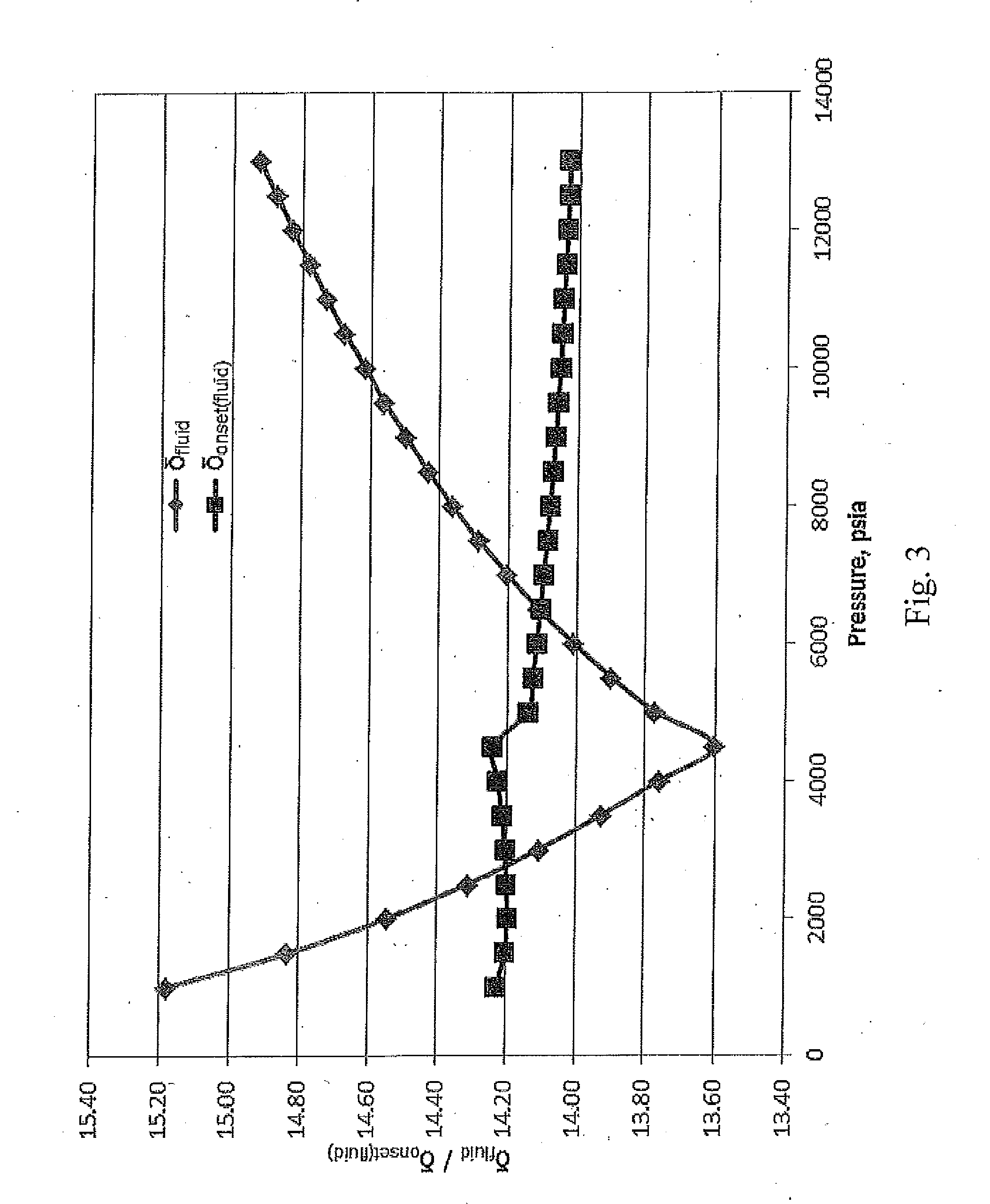Methods For Predicting Asphaltene Precipitation
a technology of asphaltene and precipitation envelope, which is applied in the direction of surface/boundary effect, measurement devices, instruments, etc., can solve the problems of significant disruption of overall operations, increase in the molar volume of fluid, and increase in the fluid density. , to achieve the effect of reducing the deposition of asphalten
- Summary
- Abstract
- Description
- Claims
- Application Information
AI Technical Summary
Benefits of technology
Problems solved by technology
Method used
Image
Examples
example 1
Determination of Fcorrection for a Fluid from the Gulf of Mexico (Fluid A)
[0134]Fluid A is a down-hole fluid from an oil reservoir in the Gulf of Mexico. The fluid was assessed in order to determine the correction factor, Fcorrection.
[0135]Stock tank oil was obtained from fluid A. Basic measurements were performed on the stock tank oil, as shown in Table 1:
TABLE 1Physical properties of the stock tank oil of fluid AFluid A (STO)NameFluid A(STO)Density @ 20° C.0.8702g / ccDensity (Corrected to 60° F.)0.8733g / ccAPI Gravity @ 20° C.31.1RI @ T120° C.1.4904RI @ T240° C.1.4818RI @ T350° C.1.4776RI @ T460° C.1.4733
[0136]An estimate of the solubility parameter based on the refractive index of the stock tank oil, δSTO(physical), was determined using formula (5):
δSTO(physical)=52.042*(RISTO2−1) / (RISTO2+2)+2.904 (5)
At 20° C., δSTO(physical)=52.042*(1.49042−1) / (1.49042+2)+2.904=17.96 MPa0.5
[0137]An estimate of the solubility parameter based on the solvent power of the stock tank oil, δSTO(solven...
example 2
Determination of δfluid for the Fluid from the Gulf of Mexico
[0139]Fluid A was further assessed in order to determine the solubility parameter of the fluid, δfluid, across a range of pressures.
[0140]The solubility parameter of the stock tank oil, δSTO, was calculated across a range of pressures from Fcorrection and δSTO(estimated), the estimate of the solubility parameter of the stock tank oil based on a physical property of the stock tank oil, according to formula (2):
δSTO=δSTO(estimated) / Fcorrection (2).
[0141]Since Fcorrection is independent of pressure, the value determined in Example 1 was applied across the range of pressures at which δSTO(estimated) was determined.
[0142]δSTO(estimated) was calculated based on the density of the stock tank oil, ρSTO, according to formula (8):
δSTO(estimated)=17.347*ρSTO+2.904 (8)
[0143]The density of the stock tank oil, ρSTO, was predicted across a range of pressures from the yield profile of the stock tank oil, as analysed using GC and high te...
example 3
Determination of δonset(fluid) for the Fluid from the Gulf of Mexico
[0154]Fluid A was further assessed in order to determine the onset solubility parameter of the fluid, δonset(fluid), at one or more pressures.
[0155]Fluid A was titrated against each of three n-paraffin titrants: heptane (C7), undecane (C11) and pentadecane (C15) at three different temperatures: 40° C., 50° C. and 60° C. The stock tank oil and the titrant were equilibrated for 30 minutes. The precipitation onset volume was determined to a precision of at least 2% by volume. The stock tank oil and titrant mixtures were observed under an optical microscope to determine when asphaltene precipitation occurs.
[0156]From the titrations, the volume fraction of the stock tank oil at the onset of asphaltene precipitation, V(onset fraction STO), the volume fraction of the titrant at the onset of asphaltene precipitation, V(onset fraction T), and the root molar volume of precipitants at the onset of asphaltene precipitation, vp0...
PUM
| Property | Measurement | Unit |
|---|---|---|
| solubility parameter | aaaaa | aaaaa |
| physical property | aaaaa | aaaaa |
| density | aaaaa | aaaaa |
Abstract
- where: δSTO(physical) is an estimate of the solubility parameter of the stock tank oil based on a physical property of the stock tank oil, and
- δSTO(solvent power) is an estimate of the solubility parameter of the stock tank oil based on the solvent power of the stock tank oil.
Description
Claims
Application Information
 Login to view more
Login to view more - R&D Engineer
- R&D Manager
- IP Professional
- Industry Leading Data Capabilities
- Powerful AI technology
- Patent DNA Extraction
Browse by: Latest US Patents, China's latest patents, Technical Efficacy Thesaurus, Application Domain, Technology Topic.
© 2024 PatSnap. All rights reserved.Legal|Privacy policy|Modern Slavery Act Transparency Statement|Sitemap



